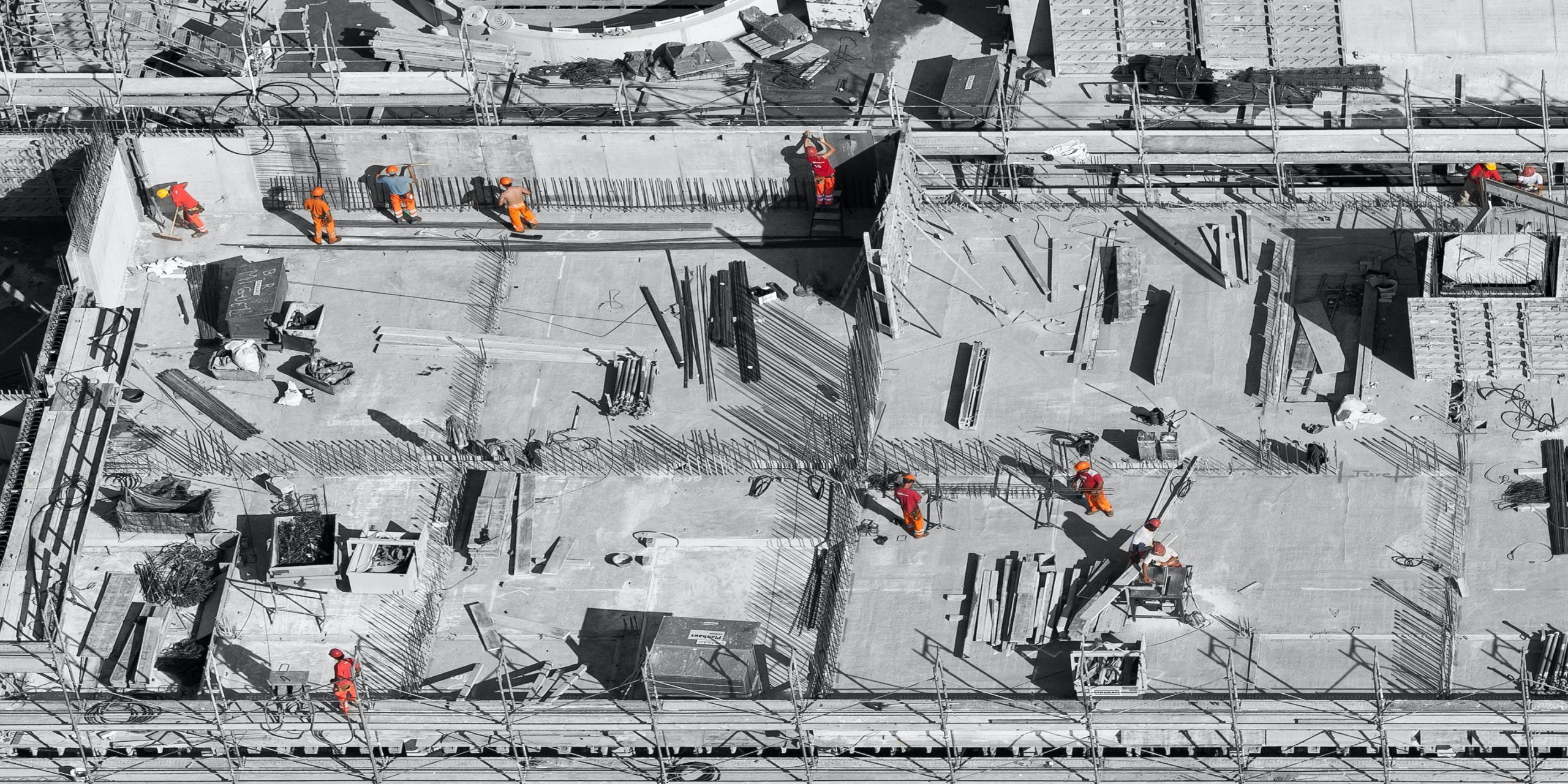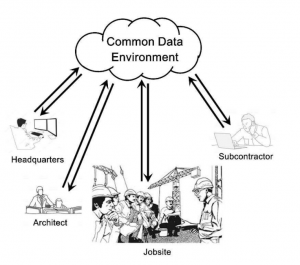
How a Common Data Environment Can Create Order for Construction Content
Like many businesses today, the construction industry is in a state of transition. In recent years, construction workflows have become information-driven, just as workflows have in other industries.
Many industries have risen to the challenge and made full use of digital technologies to transform themselves. However, for reasons that have a lot to do with how construction operates, the digital transformation of construction has lagged. When it comes to making the best use of business process information, construction faces unique challenges.
One is that construction projects are collaborative efforts where multiple specialized businesses work together toward the successful completion of a project. These include owners, architects, engineers, general contractors, a host of specialty contractors, inspectors, and project administrators. Their common goal is defined by project information – documentation, estimates, plans, models, videos and images – a body of content those interested parties create and share during the course of a project.
Having different parties creating and sharing different content types is only one part of the challenge. Another is the vast amount of data that construction projects generate. One project can produce gigabytes of content that must be searchable and accessible to whoever needs it, when and wherever they are located. Using and managing all that content is further complicated by some project participants working from corporate offices while others are at job sites, and still others travel between locations. Yet they all need access to the same content.
The digital revolution in construction – benefits and new risks
The construction industry is a huge beneficiary of digital technology used in all phases of a project, from design and pre-construction, through the construction work itself, and finally, project closeout. Technology has helped the industry move away from paper to electronic files that are more easily manipulated and shared. It has opened the door to new digital tools that can improve productivity such as scanning, 3-D modeling, digital design mark-up, and using drones to document key elements of the construction process.
Although these capabilities enhance construction workflows, they also create their own risks. For instance, more people are working in more places creating new project content. At any given moment, how do you know you are seeing everything that is relevant and current? Let’s suppose you need to look at a key file. Your team uses a Dropbox account to share files, but you’re at a job site and suddenly lose internet access. You remember receiving that important file in email, and after spending some time searching for it, you are able to retrieve it. But is it the latest version? Our digital world has made it almost too easy to save and share incorrect versions of files. Or, you go to a job site and find the trailer has been ransacked and all the computers were stolen. All work grinds to a halt until you can rebuild your file system.
The reality is that with digital construction content, there is far more content to manage and all of it must be protected. Managing and governing content in this environment carries a variety of challenges, including:
- Updates to documents don’t get shared because there is no automated alerting;
- Some stakeholders cannot access the files they need;
- VPN networks are expensive and performance is inconsistent ;
- Unstructured content results in time-wasting searches among on-premises, cloud, and removable media storage;
- Work continues based on outdated design information, causing expensive rework;
- Contractors are unable to locate the information they need to close out the job - delaying final payment
These common problems cost time and money, and for some companies they are serious obstacles to getting the most out of their digital resources.
There is, however, an emerging approach in construction that is totally changing how construction operations manage their content. It is called a Common Data Environment.
Changing the game with a Common Data Environment
A Common Data Environment (CDE) is just that, one place to keep all construction content. It is a central repository for storing and accessing design files, bid documents, specifications, images, videos, change orders, markups - everything that makes up the content that defines a construction project.

Ideally, a CDE will have these characteristics:
- Cloud-based storage that can synchronize with server storage in a hybrid solution, enabling access to the most current information from anywhere at any time via the internet without using costly VPN connections;
- Collaboration features that include strong data governance, keeping information safe and information ownership with the content creators;
- Content management features that enable content organization and search, and secure collaboration with vendors individual vendors;
- An open platform that provides a single point of access to different content types with integrations to popular construction applications.
Serving as a central content repository from the very start of a project, a CDE supports every project phase - from pre-construction to closeout. It becomes the single source of truth and it becomes the project archive, with its own legal hold rules in place.
The CDE provides construction teams with operational advantages that enable them to work more efficiently, save time, and reduce errors. That results in fewer cost overruns and greater profitability.
Here is how a CDE can provide the upper hand: :
- Easy hand-off from one project phase to another – As a project progresses from its earliest stages, it accumulates content that describes in greater detail exactly what must be built. This descriptive content includes site plans, specifications, designs and renderings, building plans, all the documentation generated by the actual construction phase including design markups and change orders, reports and records, videos and images, and as-built content. With a single source of information, moving critical content to the next group of stakeholders does not require moving the content. It’s as simple as modifying access and permissions as the project moves forward.
- Faster project provisioning – A CDE speeds project provisioning by using file structure templates and copying file structures, including access management configurations, from one project to another. It sets up file structures that look like standard folder hierarchies, yet it provides great control over who sees which files by enabling individualized permissions to specific files and folders that break waterfall permissions. All content and revisions added to the file system continue to reside in the CDE. A cloud-first CDE makes the most current versions of that content available to authorized people through any internet-connected device. Hybrid CDE configurations allow fast provisioning and file syncing to onsite servers for maximum data performance during project operations.
- Greater content security – The best technology used to create a CDE provides detailed access controls and security features such as encryption which enable project managers to control exactly who can access project content and what they are able to do with it. This prevents information from falling into the wrong hands, and it prevents unauthorized changes during construction and project closeout. Additionally, with project content in a secure cloud-based repository, there is no longer any risk of data loss from a jobsite server being damaged or stolen.
- Single content platform means nothing gets lost – With all versions of all project content stored in one place, the project workflow is streamlined and, by extension, nothing is lost. This also prevents delays in the field because a critical piece of information can’t be found, and it shortens project closeout.
- An environment that integrates with existing applications – The most powerful CDE solutions provide an open platform that integrates with other widely used construction applications. This enables anyone on the project team to work from a CDE workspace to access the project data they need.
A CDE with these capabilities improves efficiencies and streamlines workflows through all phases of construction. Since this content repository becomes a critical touchpoint for all project tasks that rely on project information, it delivers three fundamental benefits to a construction operation.
Photo by Ricardo Gomez Angel on Unsplash






